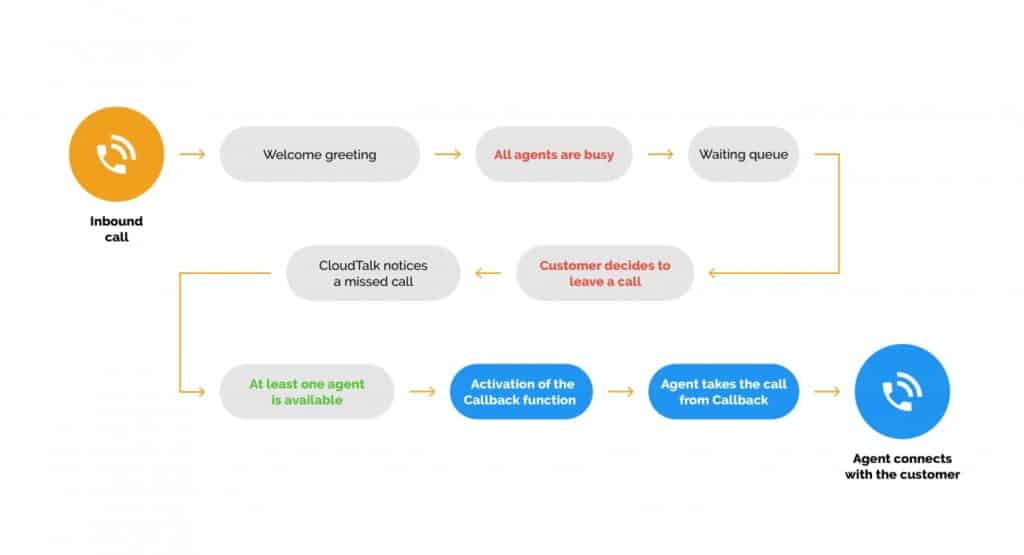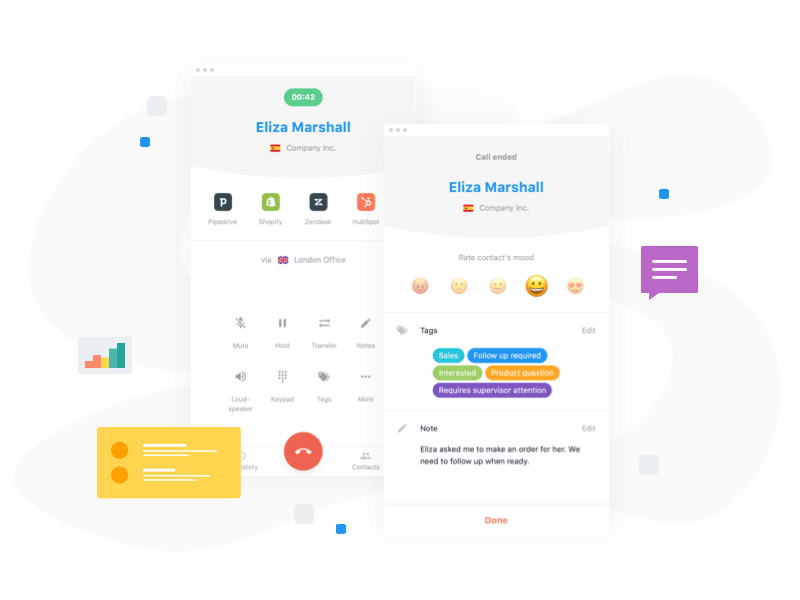10 tips to making your customer support calls friendlier

Customer support is among the top instruments to improve the customer experience. Indeed, for 96% of consumers, customer service is essential for brand loyalty. So, when appropriately managed and done right, it influences conversion rates by far.
At the same time, there’s a big gap between what companies and customers consider good service. While 80% of businesses believe they have super call centers and deliver super experiences, only 8% of customers agree.
For 68% of customers, excellent service means friendly customer service; so, when it comes to customer support calls, the wrong tone of voice or communication mistakes can ruin your company’s reputation.
In this post, you’ll find ten tips for companies on how to make customer support calls friendlier. Do your best to implement and use them regularly to keep your customers happy and deliver excellent customer service every time.
Discover trends that shape customer support in 2023
1) Reduce wait time
While customers are ready to wait for an hour when it comes to social media customer service, they will not wait for more than 28 seconds, waiting in a queue to contact an operator. Ideally, callers shouldn’t wait for more than 20 seconds before they start a conversation with your call center representative.
Customers are impatient, and they don’t want to spend time listening to your waiting-on-hold song. The more they wait, the angrier they become; and, by the time your operator says “Hello,” they’ll be about ready to blow. So please do your best to reduce the wait time.
Options:
- Add more team members to customer support phone lines.
- Offer your customers a callback option so they won’t have to wait in a queue. It helps to avoid frustration and meet expectations.

2) Be an active listener
Customer support representatives are always busy. They have tons of things to do, dozens of phone calls to answer, and many details to keep in mind. It’s all well and good, but when they are on the phone with a customer, they need to focus on that particular conversation: Even if a customer doesn’t see your face, your tone of voice can tell a lot about how carefully you listen to them.
You need to be an active listener and pay attention to everything a customer says. For them to understand you are on the same page, don’t interrupt but take notes and respond with a personal touch.
Don’t sound like a robot, answering with the phrases from your scripts. To look friendlier, try the following:
- Use a customer’s name when answering.
- Repeat the problem after a customer describes it to ensure you get it right.
- Use conversational indicators throughout the call: Phrases like “I see,” “I understand,” and others of this kind signal about your attention to a customer’s problem.
3) Call them by their names
Remember Dale Carnegie with his psychological tricks on how to win friends and influence people? As he said, “Remember that a person’s name is to that person the sweetest and most important sound in any language.”
In other words, personalized greetings and using a customer’s name during the conversation is your chance to win a person’s favour. This tiny yet essential detail can influence your brand loyalty and trust by far.

4) Mirror their tone
It means that you should do your best to speak the way your customer does it on the phone. Mirroring their mood, a customer support agent lets them know that he or she is on a customer’s side.
How to do that? For example, avoid casual language or jokes if a customer’s tone is formal. If a customer sounds more relaxed, feel free to relax your tone too. If they are excited about something, bring some energy to your tone as well.
But it doesn’t mean getting angry when speaking to an angry or frustrated customer! Here your goal is to let them down easily and make them understand you will help them by all means. The point here is to “be like a customer” but not to caricature them.
A free guide to providing better customer service

5) Make small talk
First, small talk can help you distract a customer while you look for the information he asks. Second, it’s a powerful instrument for building positive customer relations: Small talk allows customers to see there are real people behind a brand and that you treat them like real people rather than client cards in your CRM.
Plus, it can often be challenging for a customer to generate a thesis and explain the problem right away. Small talk and elaborative questions from a customer support representative will help to relax and feel more comfortable. Also, it makes a significant impact on a customer’s feelings about your company.
6) Be patient
It stands to reason for every well-managed team of customer support services that a customer needs time to describe the problem and ask for the information. That is why patience and reflection become two must-have character traits for professional call center operators.
To look friendlier, be patient even with angry or complaining customers: Don’t interrupt them and allow them to speak their minds, even if you already understand the issue.
When upset or frustrated, a customer may not be able to take what you say, even if the answer is to their benefit. So, listen carefully, wait for a customer to finish the speech and calm down, and provide the solution afterwards.
7) Use positive language
Try to avoid words with a negative context (such as “wrong,” “can’t,” “failure,” etc.) in your customer support calls. The way you frame the situation affects a caller’s experience and attitude toward your brand by far. If necessary, apologize for negative customer experience, but then jump into using positive language.
It’s all about phone etiquette: avoid jokes because you can never predict a customer’s reaction, be kind and polite, avoid slang expressions, and use conversational adverbs in communication.
For example, say, “Sure, I understand” instead of “OK,” or try “Thank you for your patience” instead of “Sorry for the wait.” Or, avoid saying something like, “We can’t do that,” but try, “Here’s what we can do for you” instead.
8) Maintain a friendly and consistent tone
The tone of voice is critical when it comes to how customers perceive call center agents. You can build phrases with positive language, but it means nothing if you say them with a negative tone. So do your best to maintain a friendly and consistent tone when speaking to a customer, even if he’s angry and complaining.
Keep calm, avoid sounding anxious or pushy, and kindly manage the situation. Find a balance between speaking too quiet or too loud, show empathy, and make a customer understand that your company cares about him.

9) Smile
A customer doesn’t see your face during a phone talk, but it doesn’t mean he doesn’t “feel” your mood. Smile, literally: It makes your voice sound friendly and warm, and a customer will notice and appreciate that.
However, don’t hurry up to “smile” at complaining or angry customers as they can “translate” it as a jest about their problems. Stick to a friendly tone but “smile” only when you feel that the time is right.
10) Leave them satisfied
Don’t finish a conversation bluntly so that a customer might feel you are happy to get rid of him. End your phone calls on a positive note and ask if there’s anything else you could help a caller with. (Some customers forget or are shy to mention that they have another problem unless you ask them about it.)
Make sure you leave a customer satisfied with your call. Answer any final questions, provide any information they might need, and finish a call in a friendly manner. All these details impact the overall customer experience and can transform an angry caller into a loyal one.
Takeaways
When it comes to customer service communication over the phone, most callers expect you to talk to them in a friendly manner. Sure enough, you have some rules and scripts for your support teams on how to speak with customers, but please don’t encourage your agents to sound like robots in the phone conversation.
Encourage agents to be active listeners, patient, and responsive. Small talks, positive language, friendly and consistent tone, smiles, calling customers by name — all these details seem insignificant but influence customer satisfaction by far.
By Lesley Vos, Content Strategist and Blogger at Bid4Papers.
















